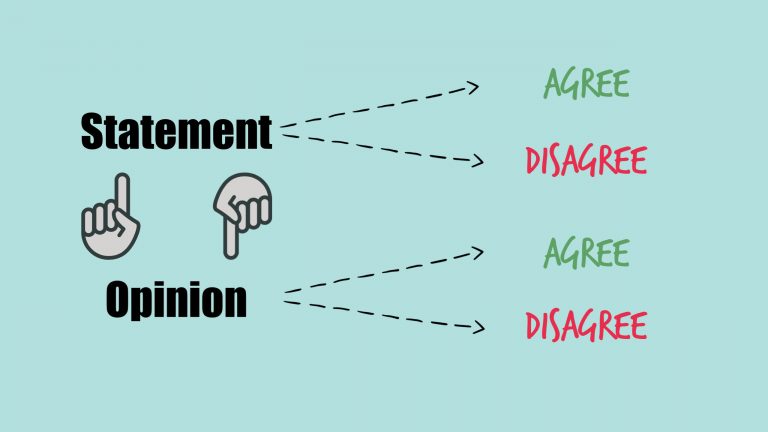
IELTS To What Extent Essay Introductions
Hey! When students prepare for IELTS writing, they often learn “chunks” of language – these are groups of words or certain sentence structures that can be used in any essay. I encourage this. For example, I tell my students to always use an “although” sentence in the conclusion of an Advantages / Disadvantages essay as this is the best way to summarise both sides. In the same way, it can be great to use a cleft sentence when you are writing topic sentences for an IELTS To What Extent Essay, or to use a “while” sentence in the introduction of a Discuss Both Sides essay. Using these “chunks” will help you to write more quickly and be sure that the structure of your essay is correct.
However, whenever you learn a “chunk” of language, you have to be careful to use it in the correct way. What works in a problem / solution essay might not be good in a positive / negative development essay. The key is not just knowing what to write, but WHY you are writing it.
One area where I see many students have a problem is in the introductions to IELTS To What Extent essays. So, in today’s blog, I want to show you the TWO DIFFERENT TYPES of To What Extent questions (yes, that’s a surprise!) and how you can customise your introduction so that it 100% targets the question.
The Problem with IELTS Agree/Disagree Introductions
Let’s start by showing you the problem. I want you to read the following question and the student’s introduction and see if you can identify what they have done wrong (the question is from my 100 IELTS Essay Questions blog).
International sporting events promote peace between countries.
To what extent do you agree or disagree?
There are many sporting events each year in which teams from different countries participate. However, while some people think that these events harm the relationship between countries, I agree that they help to promote peace for two reasons.
Can you spot the problem here?

Has the student introduced the general topic of the essay in the first sentence? Yes – they have done a good job here. Have they given an opinion? Yes – they have said that they agree with the statement for two reasons. Again, this is good. So, what is the problem? Well, let’s look at this part of the final sentence:
However, while some people think that these events harm the relationship between countries, I agree that they help to promote peace for two reasons.
First of all, look at the question again – where does it mention “some people”? IT DOES NOT! We have NOT been given an OPINION to agree or disagree with, we have been given a STATEMENT. What does this mean?
Well, firstly, you must not add “some people” into an introduction if they do not exist in the task (clearly this student is trying to recycle their introduction to a Discuss Both Sides essay but it does not work here).
Secondly, look at what the student has said – “some people think that these events can harm the relationship between countries“. Really? Can international sports events really “harm” international relationships? Of course they can’t!!! You can argue that they do not promote peace, but you can’t say that they “harm” it – that’s ludicrous. I see this problem all the time. A student is so desperate to use a “while” sentence that they invent an “opposite side” that makes no sense.
The lesson? If you are not given any “people” in an IELTS To What Extent Essay question, do not add them to your introduction (and definitely don’t invent an opposite position for them that makes no sense!)
How to write good IELTS Agree/Disagree Introductions
So, how should we write good introductions for this type of essay? Well, it will depend on the question. Let’s start by looking at questions like the one above i.e. that give us a STATEMENT to agree or disagree with.
Questions where we are given a STATEMENT / FACT
50% of IELTS To What Extent questions just give you a sentence or a statement to agree or disagree with. Don’t worry too much about what “statement” means, all you need to know is that these questions do not include the words “some believe”. Take this question for example:
Employers should give longer holidays to employees to help them do their job more efficiently. To what extent do you agree or disagree?
= STATEMENT
The underlined part does not start with “Some believe” so we should not invent people who have the opposite view. All we have to do is tell the examiner what WE believe. If you have a question like this in your exam, I recommend you use one of these introductions, depending on your opinion:
Agree:
Most people take some time off work each year to travel abroad or spend time with their friends and family. In fact, I agree that staff should be given longer holidays as it will motivate them and help them to improve their performance at work.
We cannot use a “while” sentence here as there is no contrast. Instead, we simply say “I agree” and paraphrase the statement . Note that I used “In fact” to join the sentences. I think that these are the only words that you need to transition in this sentence. Here, I have given the two specific reasons why I agree, but you don’t have to do this. If you want to keep things super simple, you can just say:
Most people take some time off work each year to travel abroad or spend time with their friends and family. In fact, I agree that giving staff longer holidays makes them more efficient in the workplace for two reasons.
OK, so that’s what you should write if you agree, but what happened if you disagree? Well, we simply switch “in fact” for “however”, and “agree” for “disagree” – simple!
Disagree:
Most people take some time off work each year to travel abroad or spend time with their friends and family. However, I disagree that staff should be given longer holidays as it will cost businesses too much money and could actually demotivate the employees.
Again, if you want to, you can save the specific arguments for the body of the essay and just replace it with “for two reasons”. Please NEVER use “due to two reasons” or “because of two reasons” as “due to” and “because of” have the same meaning as “reason”. It sounds strange having both in one sentence!
OK, so now we know how to write introductions for questions that give a statement (and I am assuming that you are going to strongly agree or disagree for reasons that I outline in this blog post), but what do we do when there ARE “some people” in a question?

Question where we are given an OPINION to agree or disagree with
I have to admit that this is a relatively new type of question (well, for somebody who has been teaching IELTS for almost 20 years, it feels new!). In the past, nearly all IELTS To What Extent questions gave just a statement, but more and more now give an OPINION. It’s easy to recognise when we are being given an opinion because the task will include the words “Some people believe” or “Some people think”:
Some people think that children should be taught how to manage money at school. To what extent do you agree or disagree?
= OPINION
Again, we now have two options – to agree or to disagree. Last time, the choice didn’t make a great deal of difference to the language in our introduction, but here it does. Let’s imagine that you agree:
Agree:
Being able to handle money effectively is an important life skill. In fact, I agree with those who believe that financial literacy should be taught in school for two reasons.
Can you see what I did here? I didn’t just say “I agree”, or use the silly phrase “Some people think that financial literacy should be taught in schools and I agree” (adding “and I agree” to the end of a sentence is the weakest way to present an opinion)! No, I used the phrase “I agree with those”. If you choose to disagree here, well, you can FINALLY use your friend the “while” sentence as you DO disagree with “some people”!
Disagree:
Being able to handle money effectively is an important life skill. However, while some believe that financial literacy should be taught in school, I feel that it is better learned when people are older and already in the workplace.
This is the ONLY variant of the four introductions where we can use ‘while’ as it is the only time that we disagree with a group of people!
IELTS To What Extent Essay Introductions Summary
Ok, there is a lot of information here, but if you think about it carefully, the logic is simple, so let’s re-cap.
- If you are given a statement, never say “some people” but simply state if you agree or disagree (NO “while” sentences!).
- If you are given an opinion, use the phrase “I agree with those who feel” if you agree, or a “while” sentence if you disagree.
Trust me – if you can remember these simple rules, you are going to make a GREAT first impression. Using the right introduction shows the examiner that you are a student who can use language flexibly (and not one who uses the same introduction for EVERY essay!).
If you found this lesson useful, you are going to LOVE my video writing lessons, which contain clear and simple instructions like this for EVERY aspect of IELTS writing. So don’t delay, come and join us in My IELTS Classroom today and start getting the help you need to achieve IELTS success.

